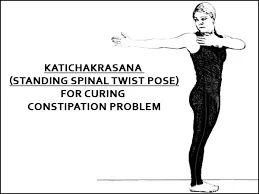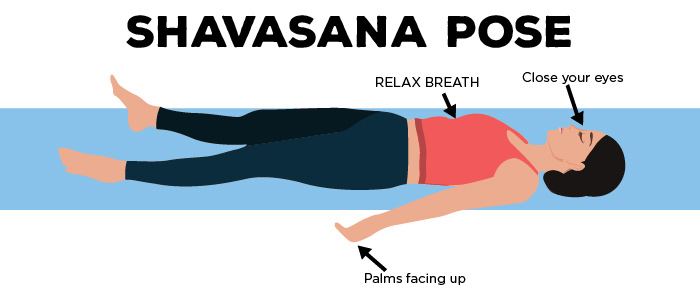Health Benefits of Daily Physical Activity During Pregnancy
Daily physical activity during pregnancy provides numerous health benefits for both mother and baby. While pregnancy brings physical changes that may make some activities challenging, incorporating regular, moderate exercise into your routine can significantly improve your pregnancy experience. It helps in improving physical fitness, preventing metabolic disorders, reducing stress and gives a psychological lift. Physical activity helps in developing the strength to carry extra weight gain through pregnancy and facilitates labor. It also helps in losing extra weight after delivery.

Starting a Pregnancy Exercise Routine: Slow and steady
Pregnant women should do 20–25 minutes of yoga or brisk walk every day. Always begin with 5 minutes of slow walking or stationary cycling with low resistance to warm up your muscles. Yoga will be your best friend during pregnancy. Yoga helps increase strength, flexibility and endurance of pelvic floor muscles needed for childbirth and also helps to develop proper breathing.
Perform simple yoga exercises which include neck (3 rounds), shoulder (3 rounds), knee (5 rounds) and ankle (5 rounds) movements each for 8 minutes.
Benefits of daily physical acitivity
For pregnant women, daily physical activity can:
👉🏼 Keep your mind and body healthy
👉🏼 Help you gain the right amount of weight during pregnancy
👉🏼 Ease some common discomforts of pregnancy, such as constipation, back pain and swelling in your legs, ankles and feet
👉🏼 Help you manage stress and sleep better.
👉🏼 Help reduce your risk of pregnancy complications, like gestational diabetes and preeclampsia.
👉🏼 Help reduce your risk of having a cesarean birth (also called c-section).
Yoga: Your Pregnancy Wellness Partner
Yoga offers particularly valuable benefits during pregnancy. Beyond physical strength and flexibility, prenatal yoga emphasizes breathing techniques (pranayama) that can be immensely helpful during labor. The mindfulness aspects of yoga practice can also reduce anxiety and promote a deeper connection with your changing body and growing baby.
The practice helps increase the strength, flexibility, and endurance of pelvic floor muscles—all crucial for childbirth. Additionally, yoga’s focus on proper breathing techniques provides tools for managing discomfort during labor.
Safe and Beneficial Yoga Poses for Pregnant Women
Yoga will be your best friend during pregnancy. If you’re healthy and you exercised dailyly before your pregnancy, it’s usually safe to continue your activities during pregnancy. However; consult with your doctor to be sure.
Yoga poses which are beneficial and in general safe for pregnant women:
🧘🏼♀️ Kati Chakrasana

Kati Chakrasana is one the yoga exercise which pregnant women can perform. It tones up the waist, back, hips muscles, prevents spinal deformity and eases childbirth.
🧘🏼♀️ Baddha konasana

Baddha konasana is another yoga asana for pregnant women. It improves flexibility in groin & hip region, makes easy and smooth delivery for pregnant women as well as stimulates and improves the function of the reproductive system.
🧘🏼♀️ Trikonasana

Trikonasana helps maintain physical and mental balance. It is very useful for pregnant women since their center of gravity shifts. It helps in stretching the legs and strengthening body muscles and opens the hips which helps during delivery. It also reduces back pain and stress.
🧘🏼♀️ Shavasana
Shavasana pose calms the mind, relaxes the body by releasing stress and repairs cells. This also helps in self-healing which is vital, as pregnant women should avoid taking pills. When we’re relaxed, our parasympathetic nervous system is activated, causing a lowered heart rate, a sense of calm, and a decreased release of stress hormones like adrenaline and cortisol.
What physical exercises to avoid
There are exercises and activities that can be harmful during pregnancy. List of the activities that should be avoided:
👉🏼 Holding your breath during any activity.
👉🏼 Activities where falling is likely such as skiing, horseback riding, or other high-impact sports, should generally be avoided.
👉🏼 Contact sports like softball, football, basketball, and volleyball can pose a risk of collisions or falls, increasing the chances of abdominal trauma.
👉🏼 Activities with jarring motions or rapid changes in direction or high impact on the joints should be avoided.
👉🏼 Activities with extensive jumping, hopping, skipping, bouncing, or running put stress on the joints and pelvic floor muscles.
👉🏼 Exercises involving deep knee bends, full sit-ups, double leg raises, and straight-leg toe touches can strain the abdominal muscles.
👉🏼 Bouncing while stretching can strain the muscles and ligaments.
👉🏼 Waist-twisting movements while standing can strain the abdominal muscles and potentially affect the uterine ligaments.
👉🏼 Heavy exercise spurts followed by long periods of no activity can put undue stress on the body.
Warning Signs: When to Stop Exercising During Pregnancy
Listen to your body during pregnancy, and stop exercising immediately if you experience any of these symptoms:
👉🏼 severe pain
👉🏼 vaginal bleeding
👉🏼 dizziness
👉🏼 shortness of breath
👉🏼 irregular or rapid heartbeat
👉🏼 difficulty walking or pain in back or pubic area are felt
If you experience any of these symptoms, stop exercising immediately and contact your healthcare provider.
Trimester-Specific Exercise Considerations
Your changing body has different needs throughout pregnancy:
First Trimester (Weeks 1-12)
While you may not look pregnant yet, fatigue and nausea can affect your exercise routine:
- Maintain pre-pregnancy routine if you feel well enough, but don’t push through exhaustion
- Focus on establishing consistent, moderate activity habits
- Stay well-hydrated and avoid overheating
Second Trimester (Weeks 13-26)
Often called the “golden period” of pregnancy when energy levels improve:
- With renewed energy, this is often an ideal time to establish a regular exercise routine
- Be aware that your center of gravity is starting to shift
- Modify exercises as your belly grows
- Begin to avoid exercises performed while lying flat on your back
Third Trimester (Weeks 27-40)
As your baby grows significantly:
- Decrease intensity as needed and focus on maintaining activity rather than increasing it
- Emphasize balance exercises as your center of gravity continues to shift
- Consider water exercises to relieve pressure on your joints
- Focus on pelvic floor strengthening and breathing exercises to prepare for labor
Read more about pregnancy milestones
First Trimester Pregnancy Milestones
Conclusion: Personalized Pregnancy Fitness
Each pregnancy is unique, and it’s crucial to consult with your healthcare provider before starting or continuing any exercise program during pregnancy. Maintaining a daily exercise routine throughout your pregnancy can help you stay healthy and feel your best.
With proper guidance, maintaining regular physical activity throughout your pregnancy can help you stay healthy, manage common discomforts, and prepare your body for labor and delivery. Listen to your body, adjust as needed, and celebrate what your amazing body can do as it nurtures new life.
30 minutes or more of moderate exercise per day on most if not all days of the week, unless you have a medical or pregnancy complication.






